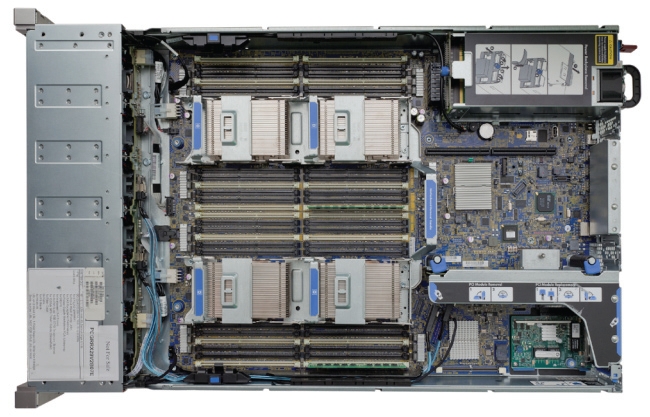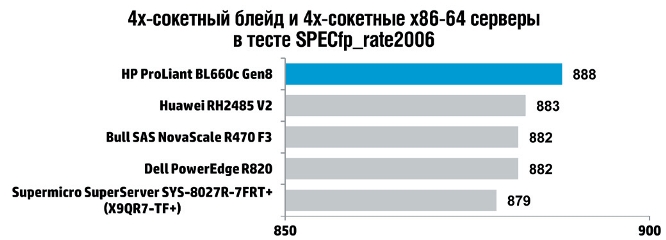New HP ProLiant Gen8 4-socket Servers - Double Compute Density
 In today's world, the development of the HP ProLiant server product range, like any other server line, is influenced not only by the work of engineers and managers of a manufacturing company. New technical solutions often depend on the advent of technological solutions. For example, the output of Intel Xeon E5-4600 processors, designed for super-dense computing, contributed a lot to the appearance of two new models in the list of HP server models, the DL560 Gen8 and BL660c Gen8.
In today's world, the development of the HP ProLiant server product range, like any other server line, is influenced not only by the work of engineers and managers of a manufacturing company. New technical solutions often depend on the advent of technological solutions. For example, the output of Intel Xeon E5-4600 processors, designed for super-dense computing, contributed a lot to the appearance of two new models in the list of HP server models, the DL560 Gen8 and BL660c Gen8.Now users of HP products will be able to get double the amount of processor power in the usual 2U format (DL560 Gen8) or in one standard-form blade server (BL660c). That is, where previously it was possible to install only two processors, now it will be possible to fit four. It turns out a solid savings, especially in terms of the number of processors in the data center rack. And from the point of view of technological solutions, everything also looks interesting: new models, on the one hand, embody all the best from mass infrastructure of two-socket servers, and on the other hand, are equipped with technical moves from high-performance 4S platforms, which gives the whole line additional flexibility. For example, the DL560 Gen8 fits perfectly between the dual-processor DL380p and the powerful enterprise-scale system, the DL580 G7.


HP ProLiant DL560 - Super-dense 4-socket layout significantly improves space utilization
')
At the same time, the increase in the number of processors and cores in HP was not limited to the closest attention to other elements. For example, due to the number of slots and support for 32-gigabyte memory modules in the DL560 Gen8, the amount of installed RAM is increased to 1.5 TB. For expansion cards, there are 6 PCI slots, but there is no need to install a RAID controller: the DL560 Gen8 comes with an integrated SmartArray controller, among other features that fully support SSD drives. This controller allows you to get the most out of high-speed drives and maintains the durability of their work.
Even more important updates fell to the share of BL660c blade server. It has standard width and full height, so you can install up to 8 such servers in a standard c7000 chassis. Each of them can be equipped with four Xeon processors of 8 cores. So, if desired, with the help of BL660c, you can increase the processor density to 256 cores per shelf. The maximum amount of RAM it has is slightly lower than that of the DL560 Gen 8, “only” 1 TB, but this is not so important for the blade server. In the same way as the number of slots for drives. The BL660c Gen 8 has two of them, hard and solid-state SFF drives are installed in them, that is, 2.5-inch. Given that blade baskets are usually connected via high-speed interfaces to the storage system, or are equipped with their own data storage systems, these two slots perform, in fact, a service function. But the capabilities of the FlexibleLOM network controller built into the BL660c will most likely be used to the full. Installation of various network adapters is supported, up to the FlexFabric solution on 4 10 Gigabit Ethernet ports.
Whatever the other technical characteristics of the new servers, the key point in them is still the number of processors per server unit. We live in an era of increasingly active use of virtualization, including for business-critical applications, so many corporate information systems will be able to get a serious increase in performance level working on BL660c and DL560 Gen 8. Especially since today the BL660c blade server Gen8 leads in performance among leading 4-processor servers in the SPECfp_rate2006 test

Source: https://habr.com/ru/post/155609/
All Articles